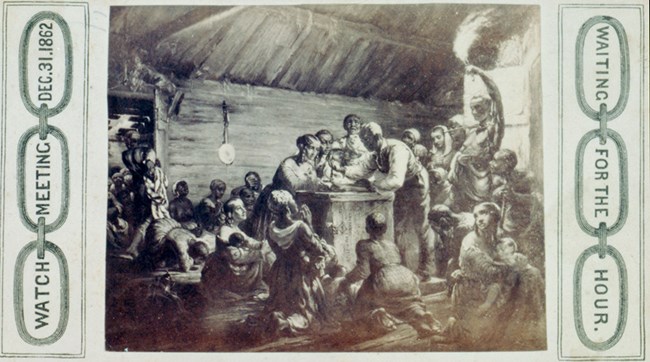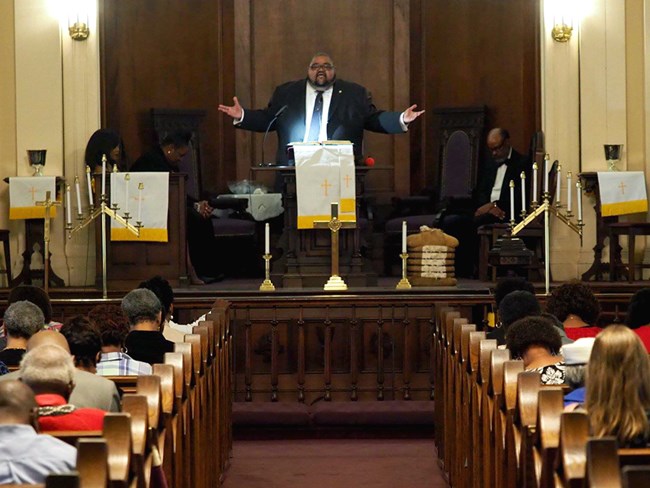Last updated: May 30, 2019
Article
NHA Podcast Episode 3.2: Gullah Geechee Communities Revive Freedom’s Eve Traditions

Gullah Geechee Cultural Heritage Corridor / Herb Frazier
Philadelphia, PA (May 20, 2019) – The second episode of Season 3 of the National Heritage Areas Podcast is now available. This episode continues with the season’s theme of telling all Americans’ stories by exploring the tradition of Watch Night, or Freedom’s Eve, in Gullah Geechee communities in the coastal South. This historic event, first held on December 31, 1862, commemorates the Emancipation Proclamation and dawn of freedom for millions of enslaved people.
In Episode 3.2, Jules speaks with Heather Hodges, Executive Director of the Gullah Geechee Cultural Heritage Corridor, about efforts in the Corridor to support and revive the Watch Night tradition. The Corridor, which spans 425 miles of coastline and sea islands from North Carolina to Florida, is the traditional home of the Gullah Geechee, who are descended from enslaved peoples from West and Central Africa. The Corridor’s mission is to raise awareness of the Gullah Geechee people and the role they have played in American culture, and to help preserve and celebrate their history and traditions.

Library of Congress / Heard & Moseley (1863)
One of those traditions is Watch Night. In the midst of the Civil War, people gathered together in churches on New Year's Eve in 1862 to await midnight, when the Emancipation Proclamation would free enslaved people in those Southern states in rebellion. This time of great anticipation was marked by prayer, contemplation, and singing. After the war, many black churches continued to observe Watch Night each year. However, over time, the connection between the New Year and the Emancipation Proclamation was largely forgotten.

Gullah Geechee Cultural Heritage Corridor / Herb Frazier
Since 2017, the Gullah Geechee Cultural Heritage Corridor has been working with churches and historians to reestablish Watch Night’s ties to the celebration of freedom. By documenting Watch Night traditions and helping churches return Gullah Geechee traditions to their services, the Corridor is working to keep that tradition alive.
In 2018, the Corridor partnered with Morris Brown AME Church and Magnolia Plantation and Gardens to host a traditional Watch Night service in Charleston, South Carolina. Hodges explained, “It was an educational and inspiring afternoon of worship, history lessons and cultural performances that conveyed the importance of the Emancipation Proclamation to the Gullah Geechee people—and how their Watch Night tradition helps keep alive their collective memory of what the dawning of freedom meant to their enslaved ancestors.”
Find out more about Watch Night and the Gullah Geechee Cultural Heritage Corridor by streaming, downloading, or reading the transcript of Episode 3.2 of the National Heritage Areas Podcast.

Gullah Geechee Cultural Heritage Corridor / Herb Frazier
Discover more news and stories from America's National Heritage Areas.
